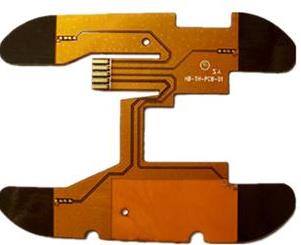In recent years, flexible circuit boards (FPC) have become one of the fastest growing sub-sectors of the printed circuit board industry. According to IDTechEx's forecast, by 2020, the market for flexible circuit boards (FPC) will grow to US$26.2 billion. How to solder flexible circuit boards? What issues should be paid attention to?
Operation steps of flexible circuit board welding method:
1. Before soldering, apply flux to the pad and treat it with a soldering iron to avoid poor tin plating or oxidation of the pad, resulting in poor soldering. Generally, the chip does not need to be processed.
2. Use tweezers to carefully place the PQFP chip on the PCB board, taking care not to damage the pins. Make it aligned with the pad and ensure that the chip is placed in the correct direction. Adjust the temperature of the soldering iron to more than 300 degrees Celsius, dip a small amount of solder on the tip of the soldering iron, press down the aligned chip with a tool, and add a small amount of solder to the two diagonal pins. Hold down the chip and solder the pins on the two diagonal positions to make the chip fixed and unable to move. After soldering the opposite corners, recheck the alignment of the chip position. If necessary, adjust or remove and realign the position on the PCB board.

3. When starting to solder all the pins, add solder to the tip of the soldering iron, and apply flux to all the pins to keep the pins moist. Touch the end of each pin of the chip with the tip of a soldering iron until you see the solder flowing into the pin. When soldering, keep the tip of the soldering iron parallel to the soldered pin to prevent overlap due to excessive soldering.
4. After soldering all the pins, wet all the pins with flux to clean the solder. Suck off the excess solder where needed to eliminate any short circuits and overlaps. Finally, use tweezers to check whether there is any false soldering. After the inspection is completed, remove the flux from the flexible circuit board, and soak the hard brush with alcohol and wipe it carefully along the pin direction until the flux disappears.
5. SMD resistance-capacitance components are relatively easy to solder. You can put tin on a solder joint first, then put one end of the component, clamp the component with tweezers, and then see if it is placed correctly after soldering one end; If it has been aligned, then solder the other end.
In terms of layout, when the size of the flexible circuit board is too large, although the soldering is easier to control, the printed lines are longer, the impedance increases, the anti-noise ability is reduced, and the cost increases; The lines interfere with each other, such as the electromagnetic interference of the circuit board. Therefore, the PCB board design must be optimized:
(1) Shorten the wiring between high-frequency components and reduce EMI interference.
(2) Components with heavy weight (such as more than 20g) should be fixed with brackets and then welded.
(3) Heat dissipation issues should be considered for heating components to prevent defects and rework caused by large ΔT on the surface of the components, and the thermal components should be far away from the heating source.
(4) The arrangement of components should be as parallel as possible, so that it is not only beautiful but also easy to weld, and it is suitable for mass production. The circuit board is designed as a 4:3 rectangle (good). Do not change the wire width to avoid wiring discontinuities. When the circuit board is heated for a long time, the copper foil is prone to swell and fall off. Therefore, avoid using large-area copper foil.